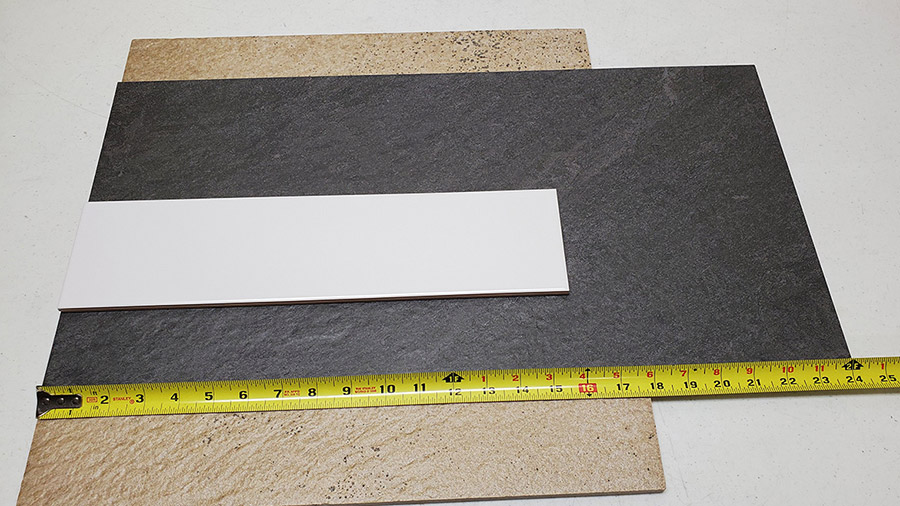How to Define Large-Format Tile and Its Subfloor Requirements

Photo: Getty Images.
The term “large-format tile”, or LFT as it has become known, is a term that has been circulating through the U.S. tile world for over 20 years.
According to the Tile Council of America Handbook 2001, under the header “Bonding Large-Format Tile for Coverage and Support” it states, “Large tiles are generally considered to be 8” x 8” and greater.” Under the “Subsurface Tolerance” header it states, thin-set tolerance to be ¼” in 10’, to conform with the ANSI specifications. However, the words “large-format tile” were not connected to the subfloor requirement.
In 2013, both the Handbook and ANSI A108 quote the now-familiar subsurface statement: “For tiles with all edges shorter than 15”, maximum allowable variation is ¼” in 10’ and for tiles with at least one edge 15” in length or longer, maximum allowable variation is 1/8” in 10’. Interestingly, the term “large-format tile” is missing.
During the last 20-plus years, with tile getting larger and the need for a flatter substrate, the tile industry somehow mistakenly assumed and overused the statement that large-format tile was a tile 15” or longer, but neither ANSI nor the Handbook ever made that statement.
So, what is a large-format tile? At this point, there is a guy in the back of the room jumping up and down saying, “That can’t be right. Large-format tile is anything 15” or greater” and most folks in the tile industry would agree. More confusion.

Which of these would be considered large format tile? Photo: Scott Carothers.
Now, with the introduction of the ANSI A108, A118, A136 specifications in January 2024, the term “large-format tile” finally received a recognized definition. In that document, one of the new sections, A108.T, American National Standard Terminology of Tile Assemblies – 2023, lists the following definition:
“Large Format Tile: A tile manufactured in conformance with ANSI A137.1 having a facial dimension greater than 23 in. (584 mm).”
ANSI now provides a clearer standard for substrate flatness.
ANSI A108.02-4.2.1 Substrate flatness for tile shorter than 15 in. (0.38 m): For tiles with all edges shorter than 15 in. (0.38 m), the substrate shall have a maximum permissible variation of 1/4 in. in 10 ft. (6 mm in 3 m) from the required plane, and no more than 1/16 in. variation in 12 in. (2 mm in 305 mm) when measured from the high points in the surface.
ANSI A108.02-4.2.2 Substrate flatness for tiles 15 in. (0.38 m) or longer: For tiles with at least one edge 15 in. (0.38 m) or longer, the substrate shall have a maximum permissible variation of 1/8 in. in 10 ft. (3 mm in 3 m) from the required plane, and no more than 1/16 in. variation in 24 in. (2 mm in 610 m) when measured from the high points in the surface.
Finally, with these updates to the ANSI A108, A118, and A136 document, we now know that an LFT is a tile greater than 23” and the flatness requirement for the substrate. Confusion gone!
See more articles from our Agust 2024 issue!
Looking for a reprint of this article?
From high-res PDFs to custom plaques, order your copy today!






